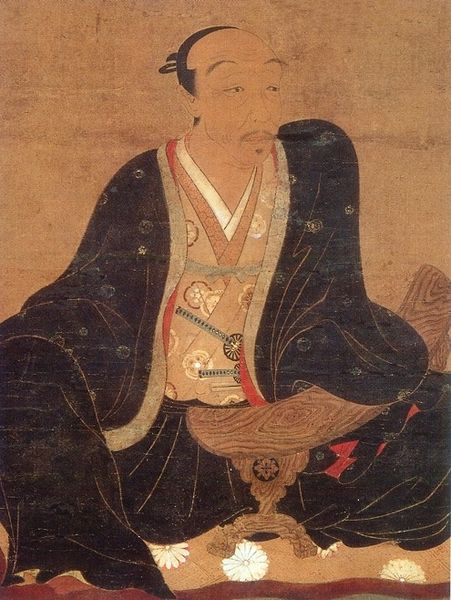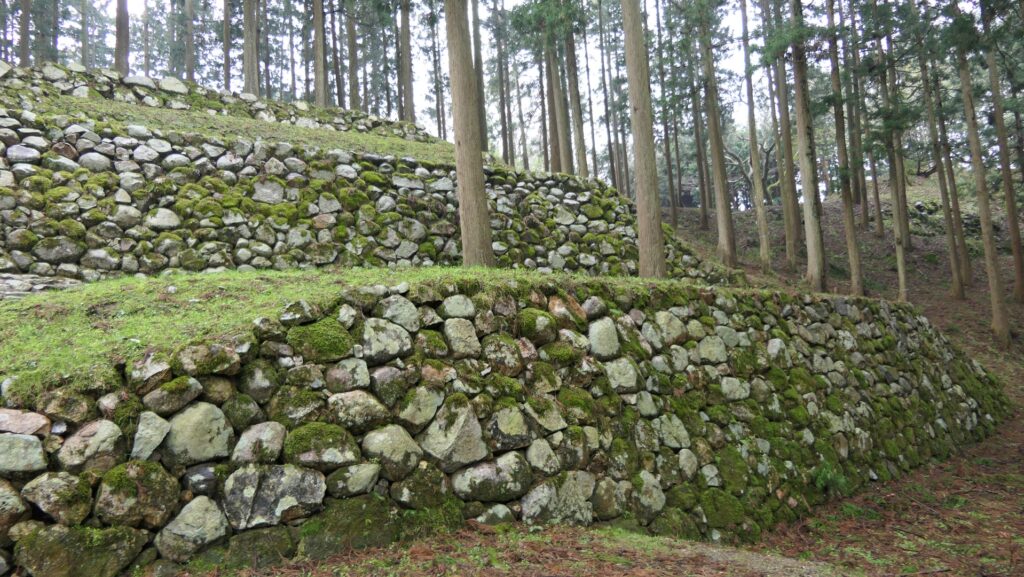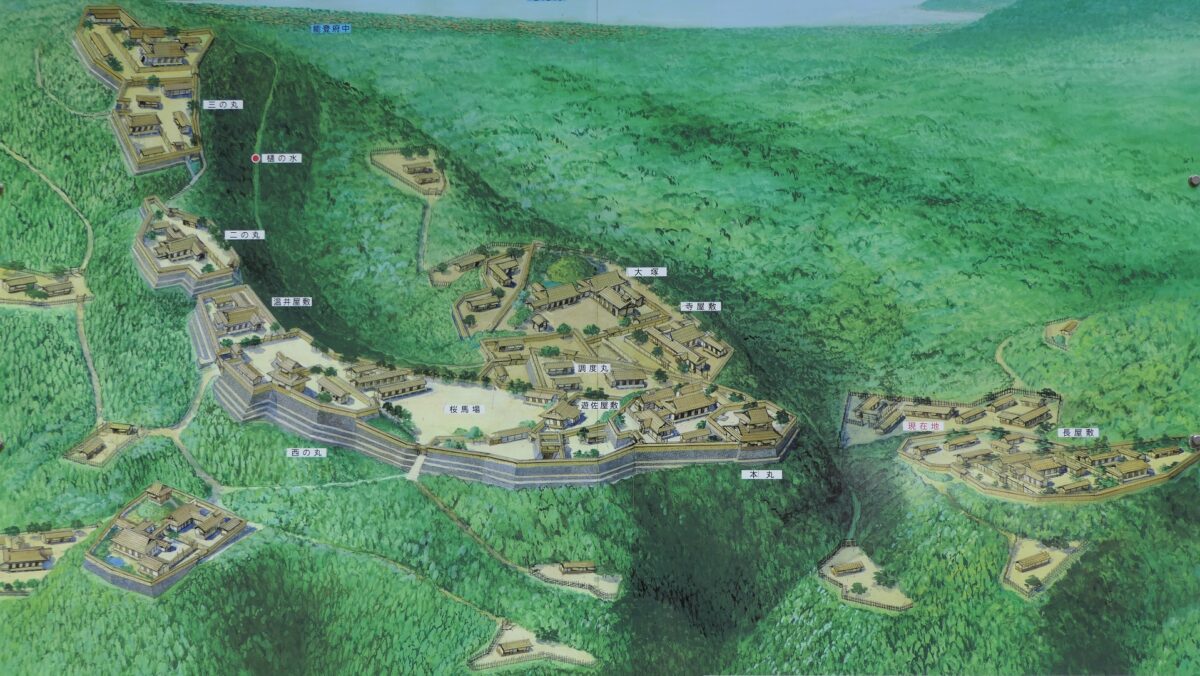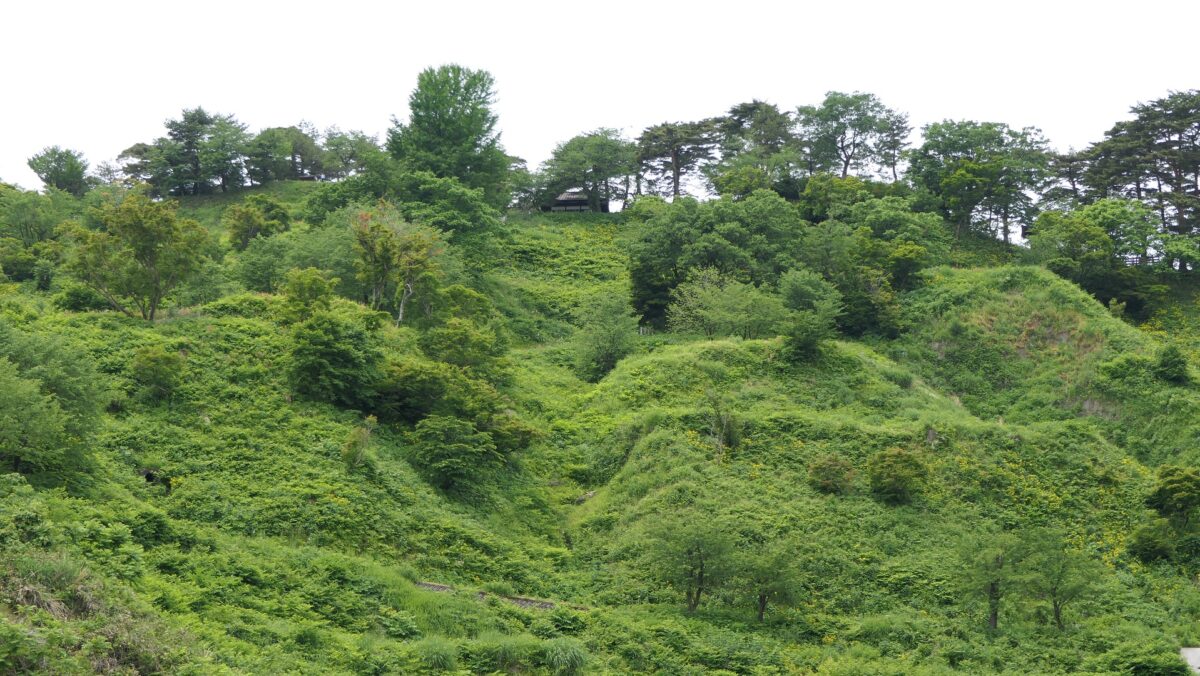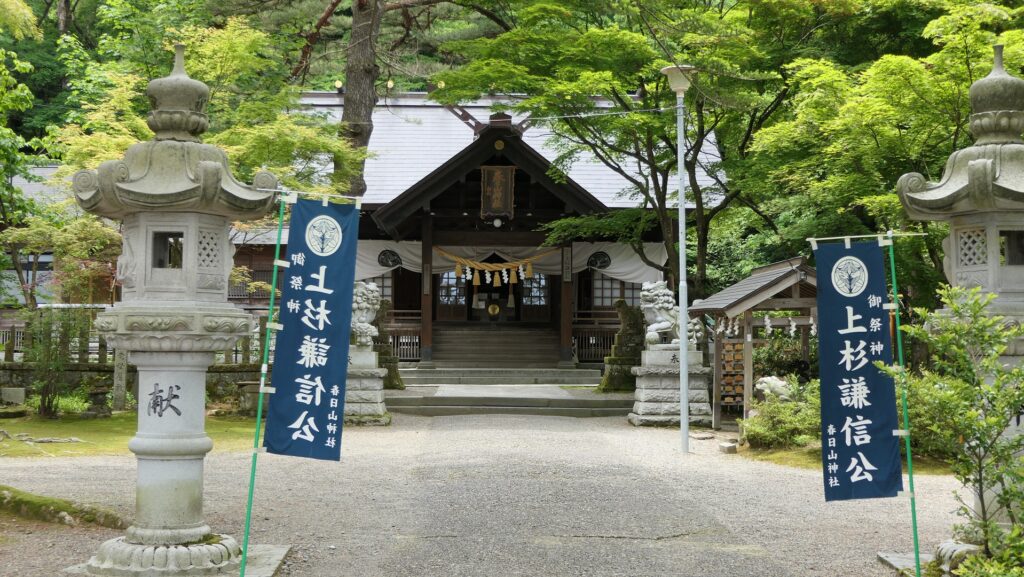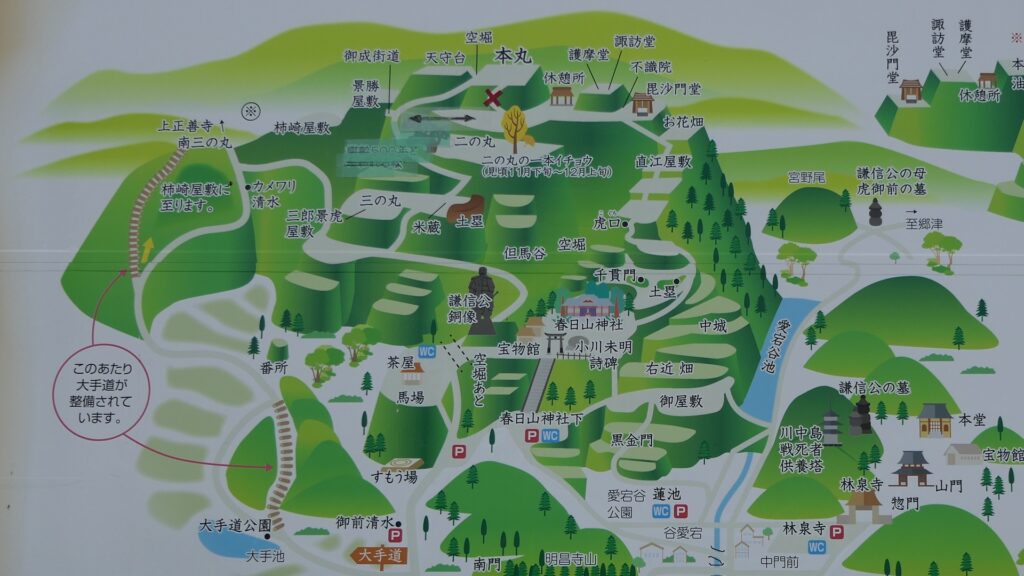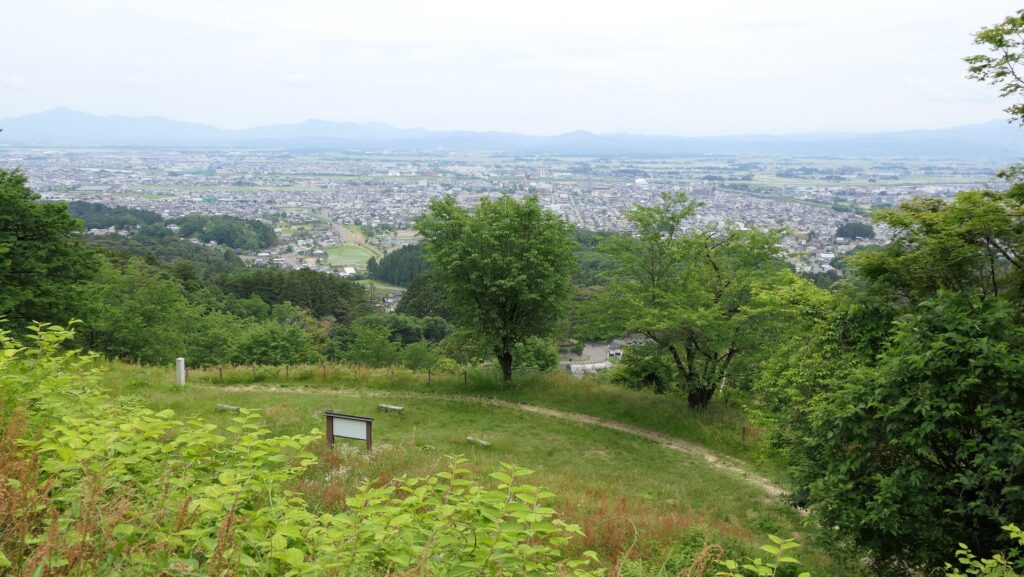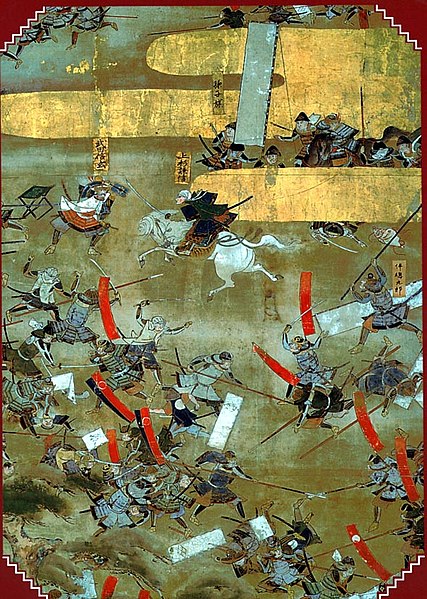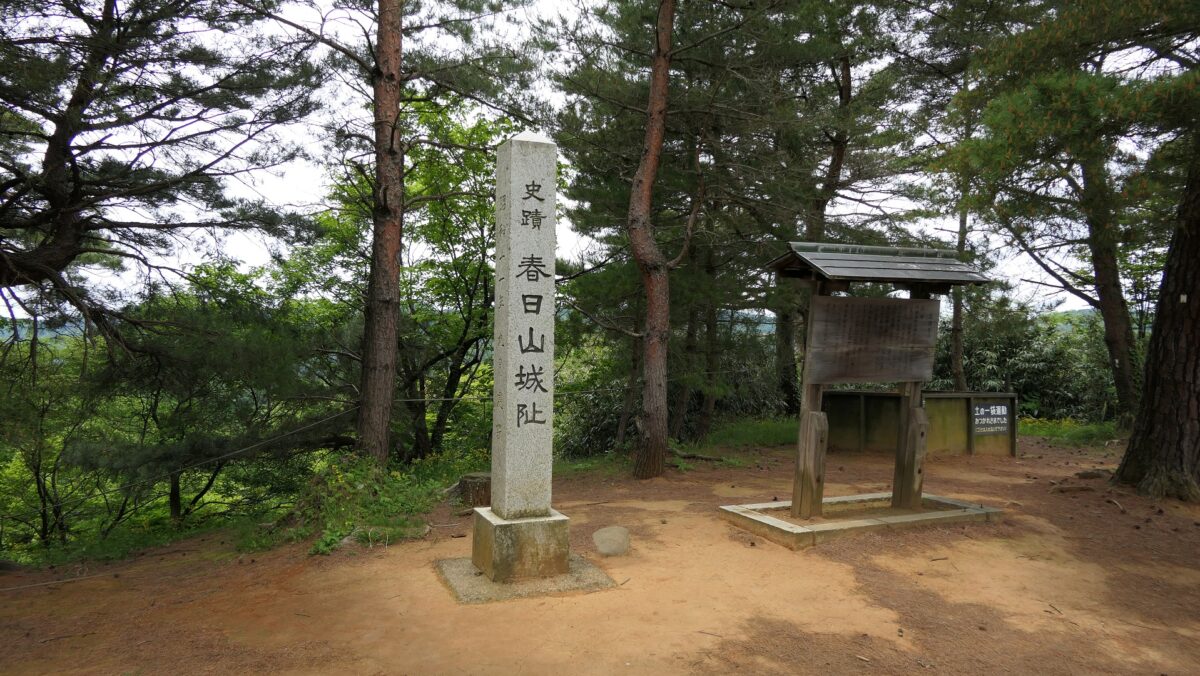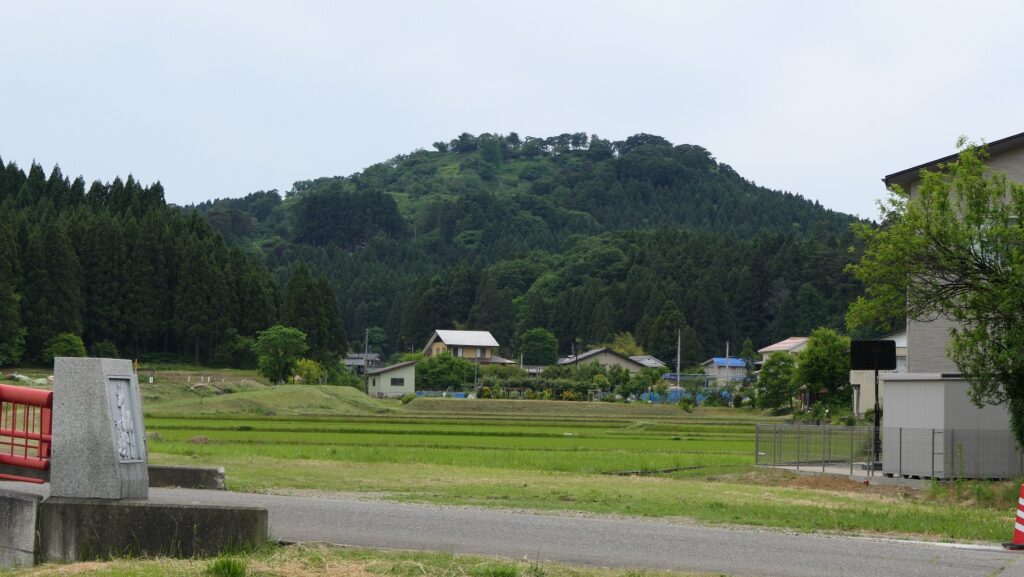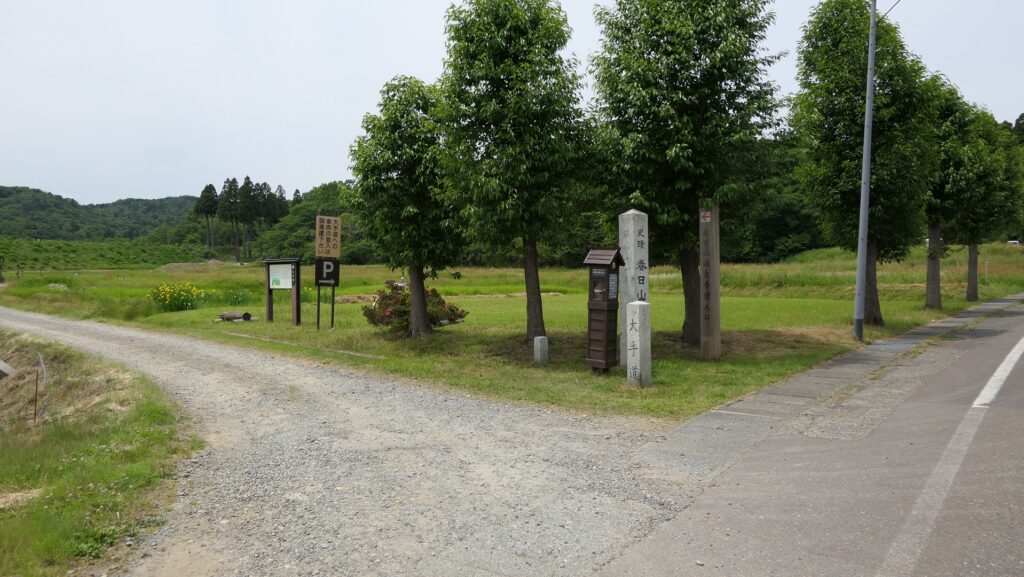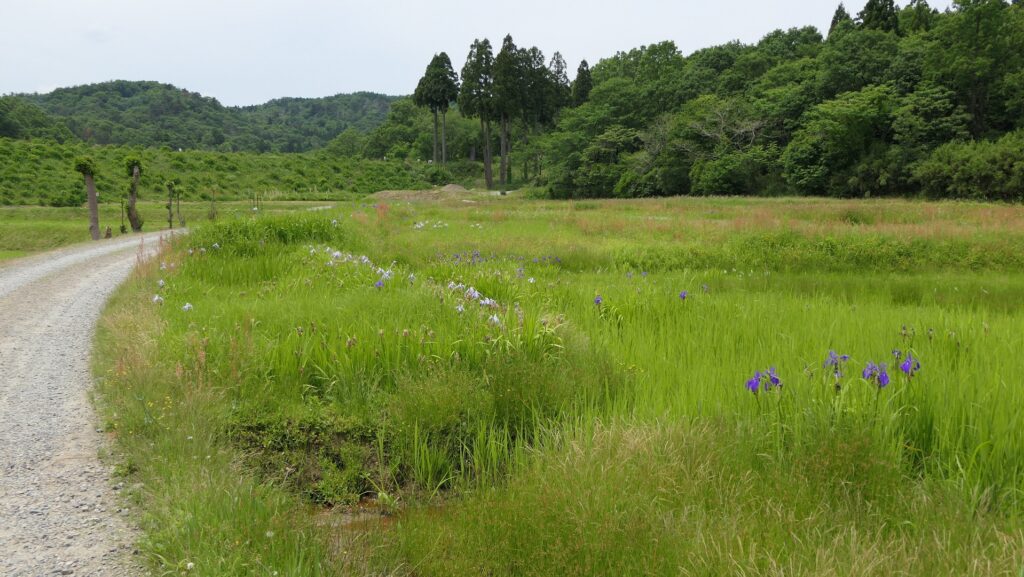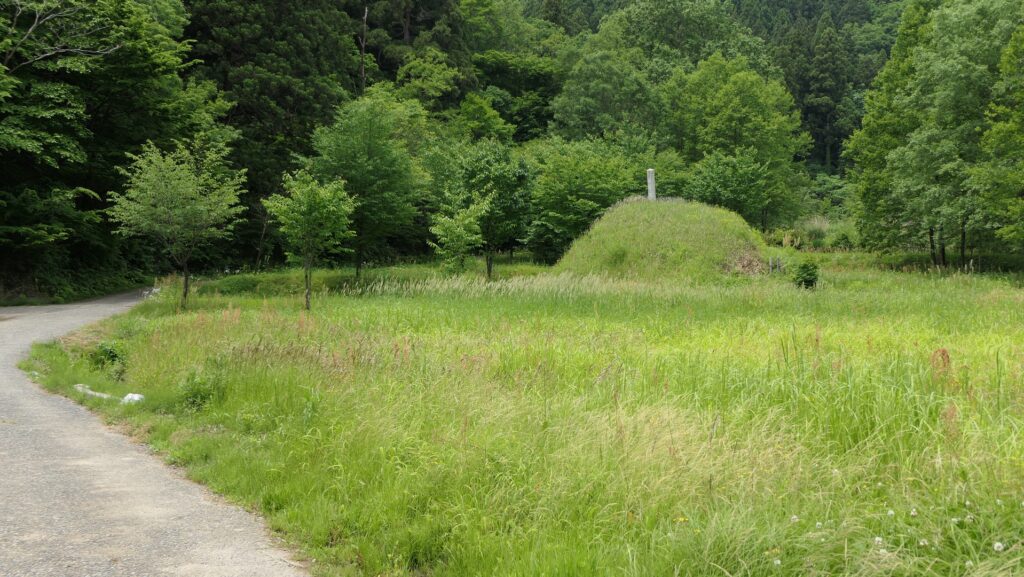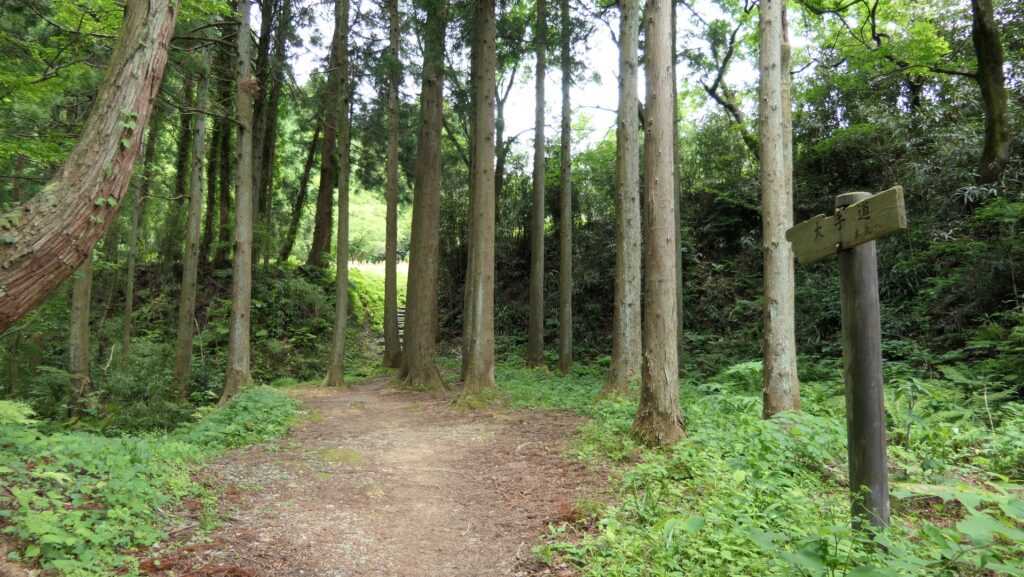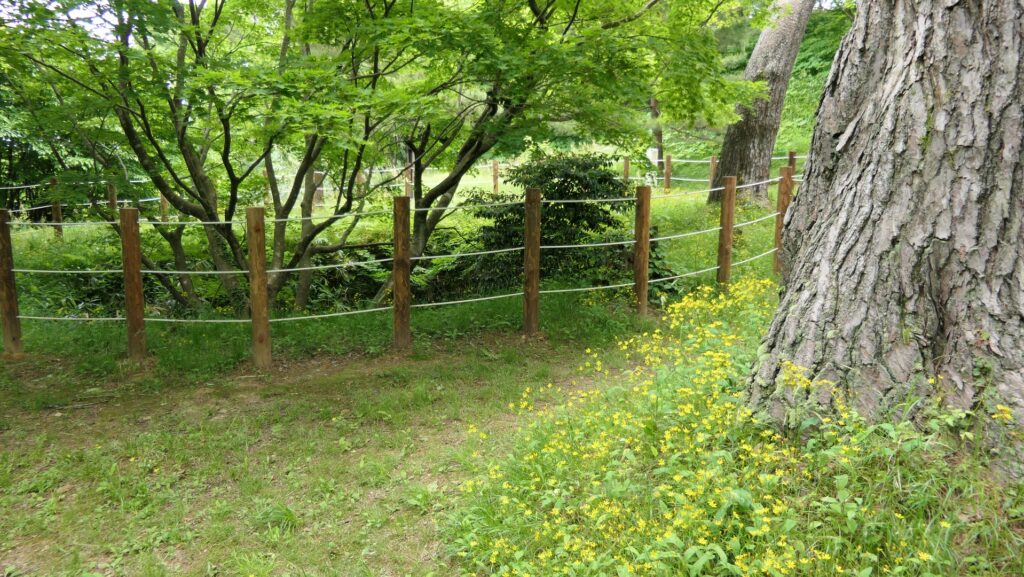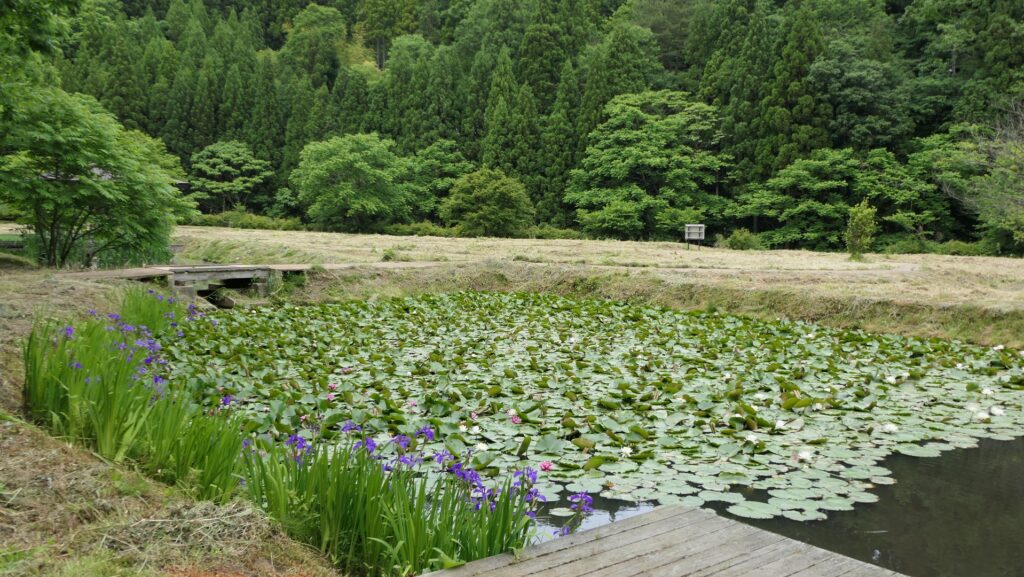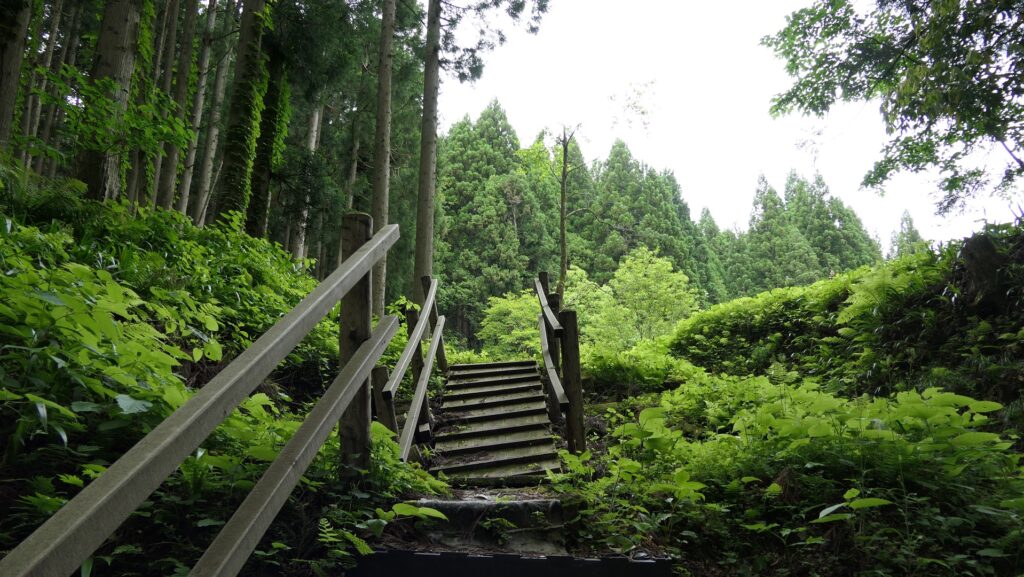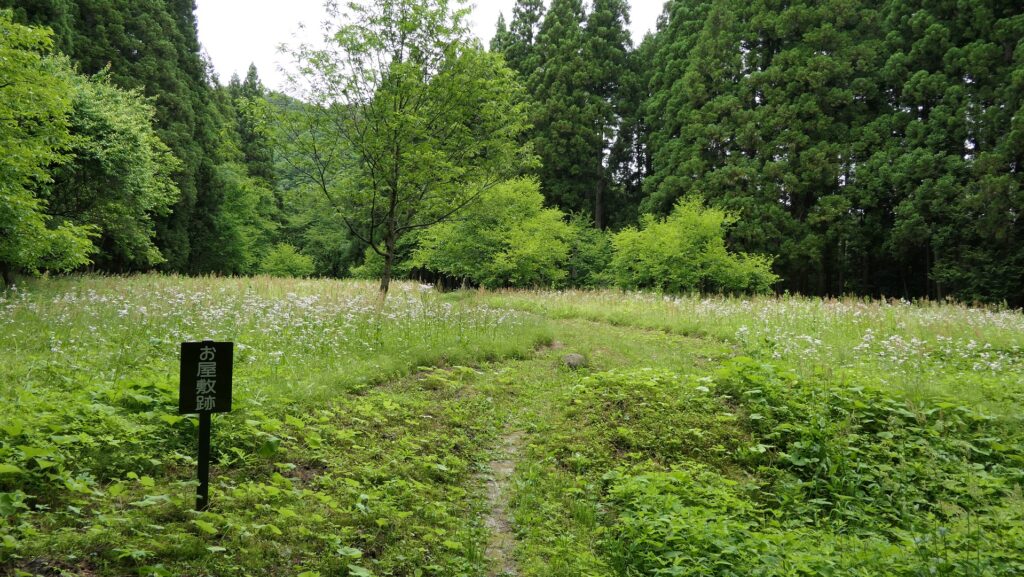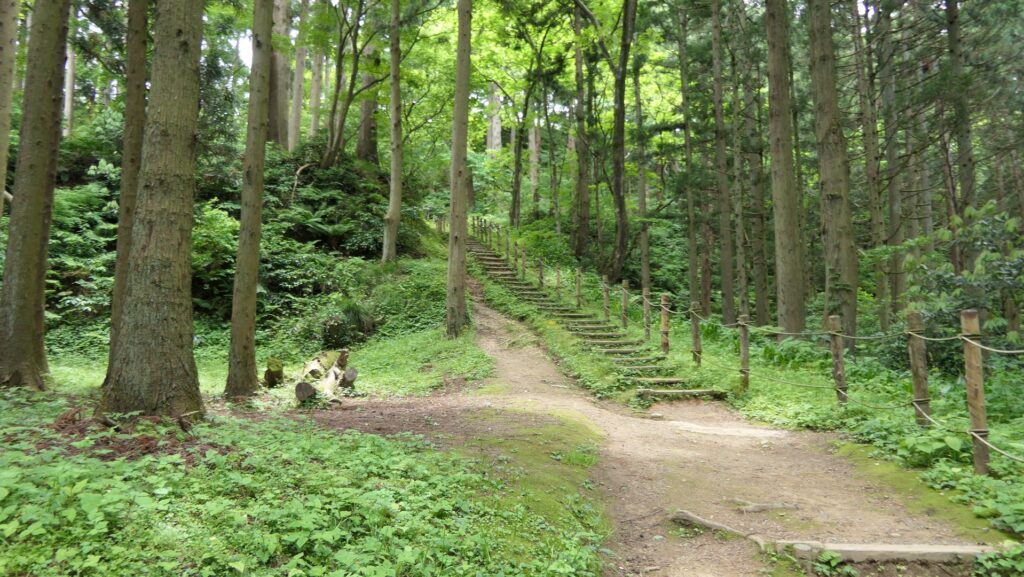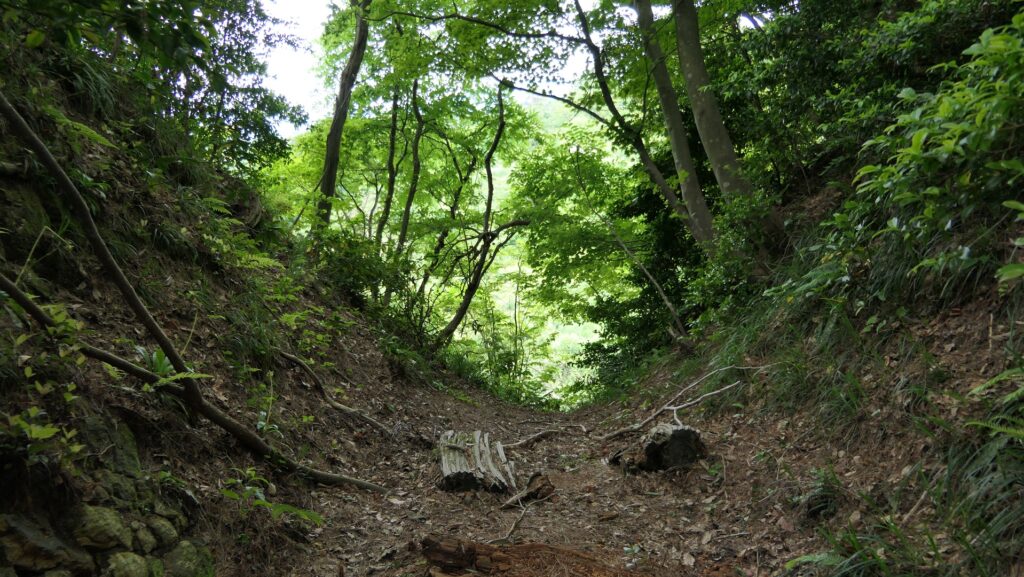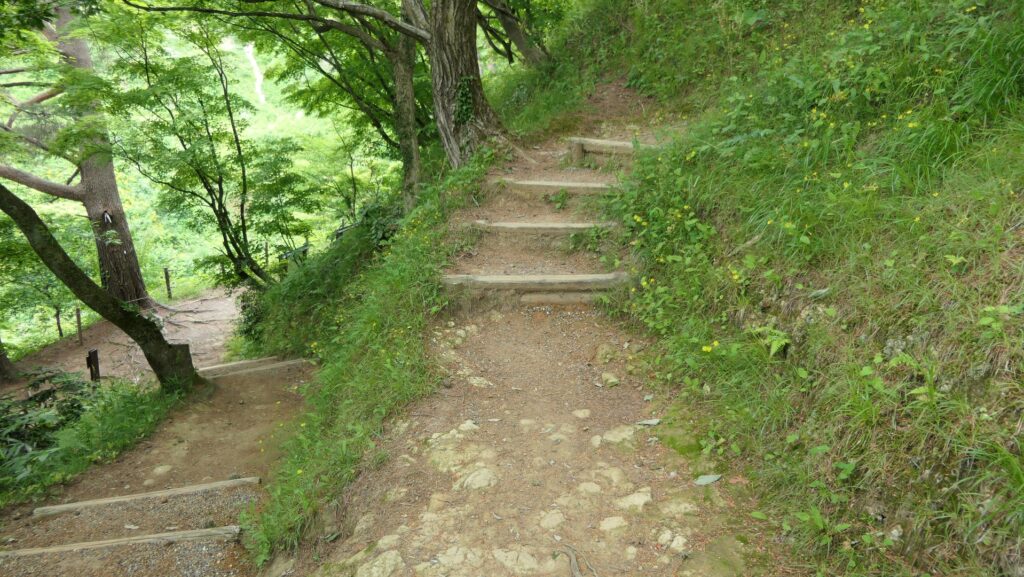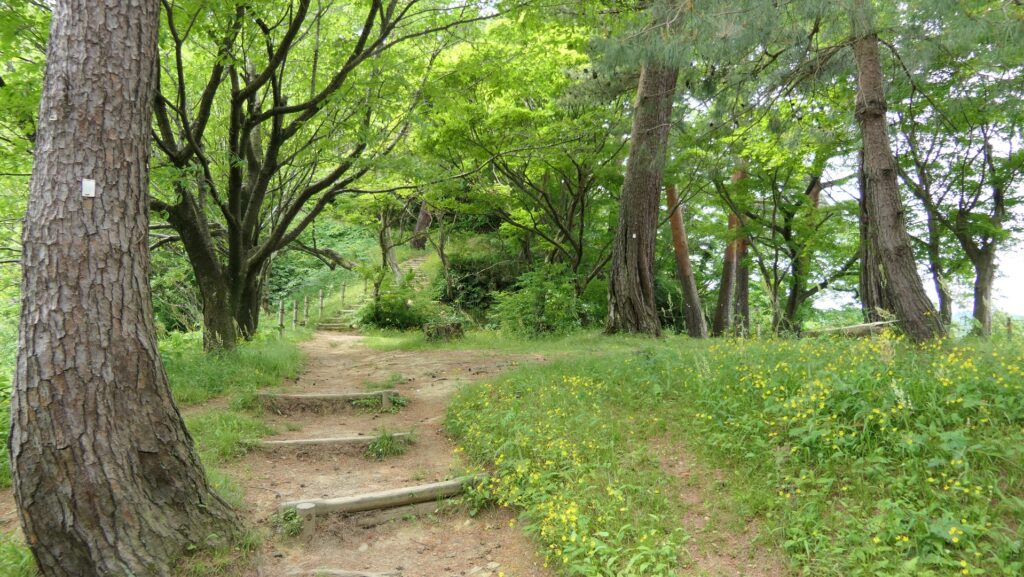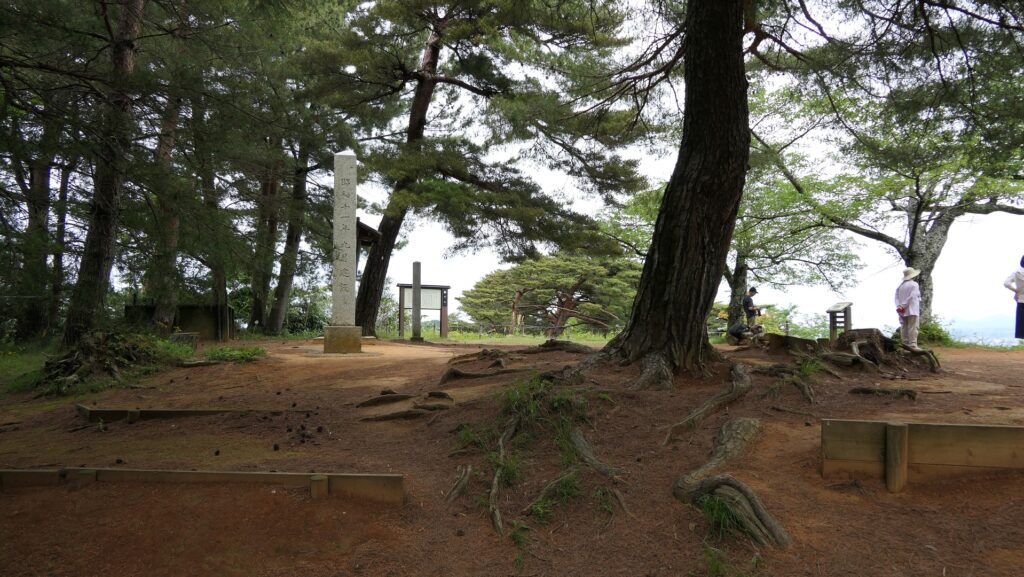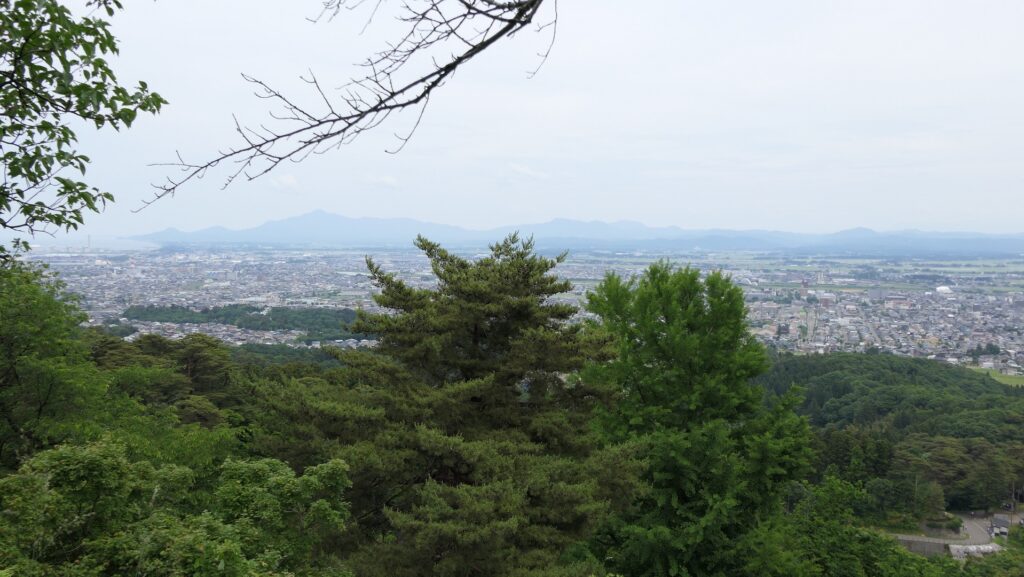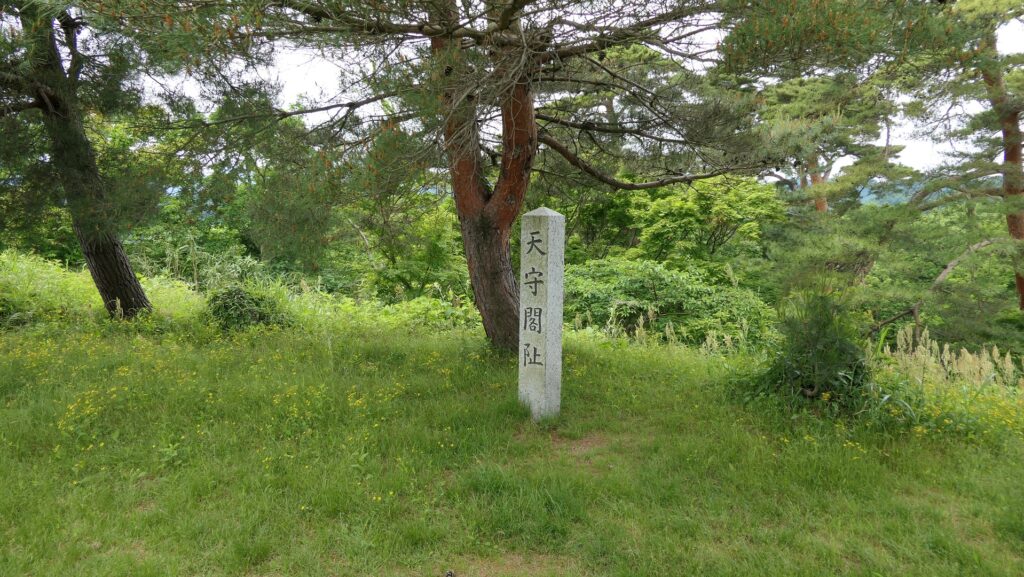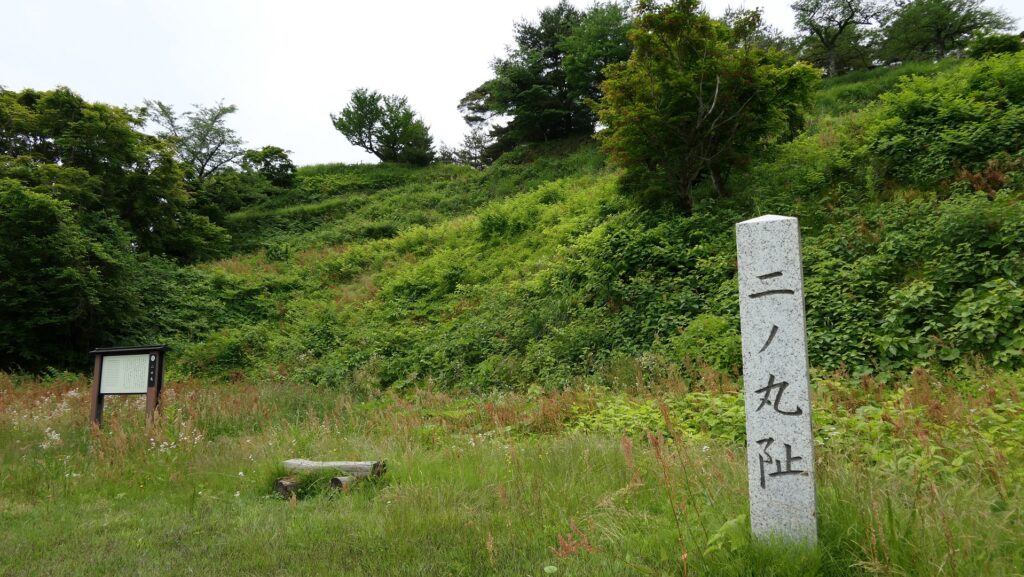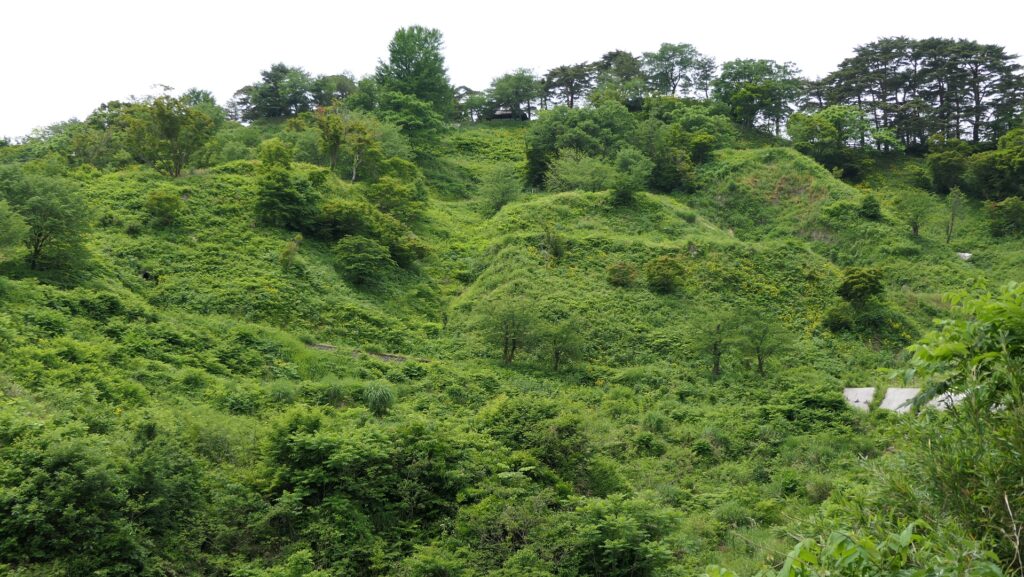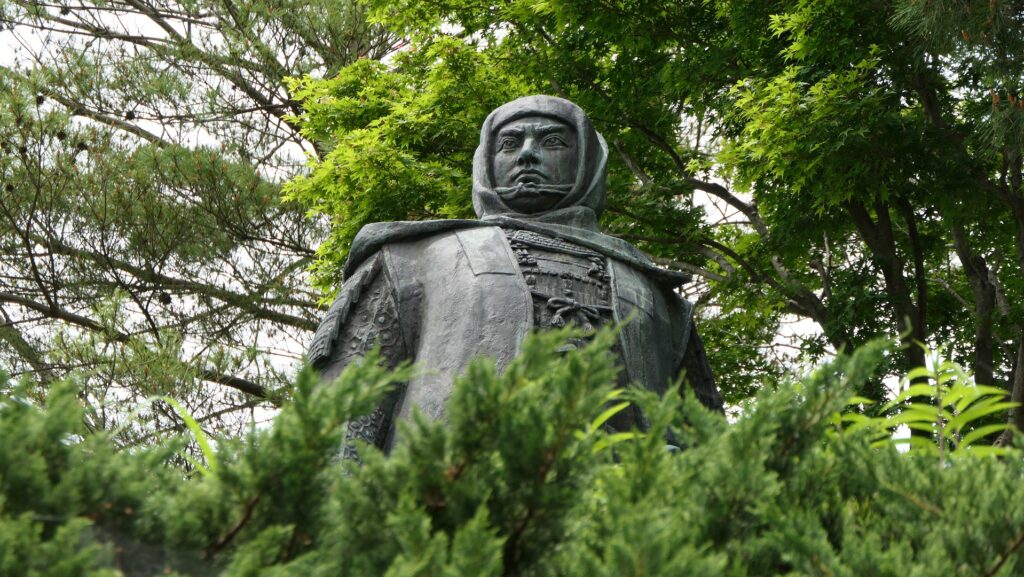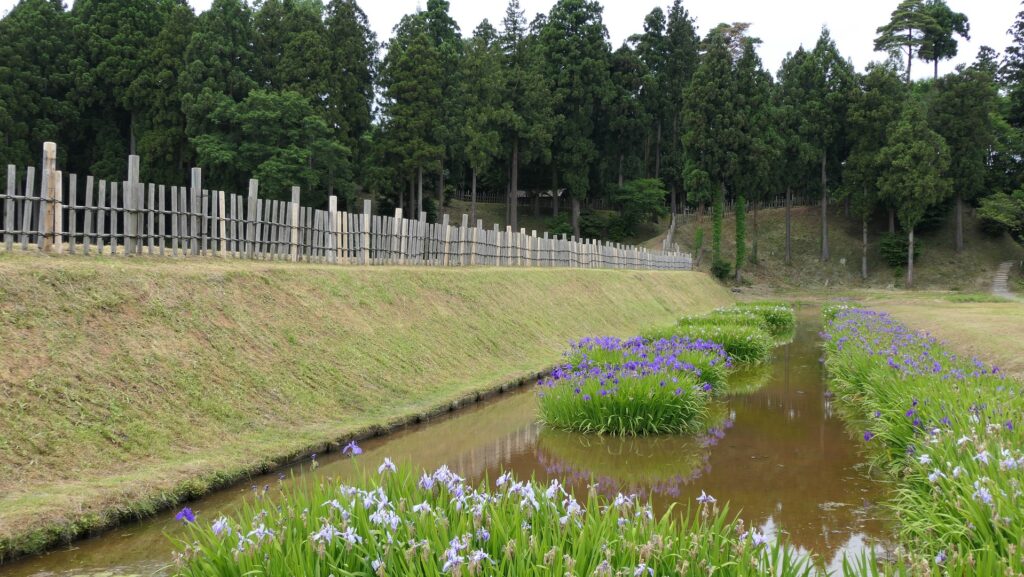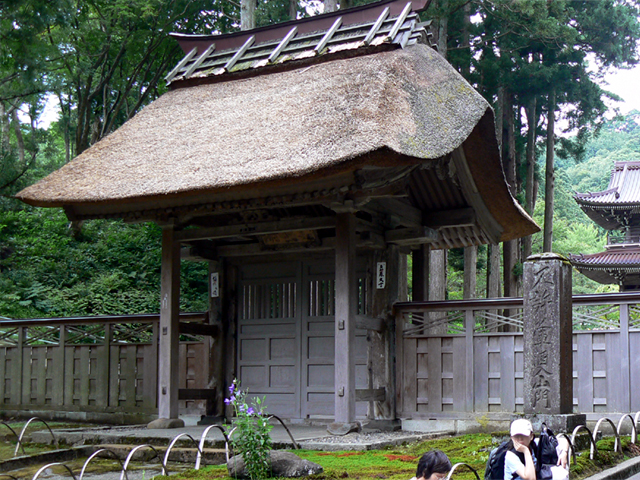Location and History
Capital of Noto Province
Nanao Castle was a large mountain castle located in Noto Province, what is now the modern part of the northern Ishikawa Prefecture, the Hokuriku Region. The castle was built on about 300m high mountain ridges and the name “Nanao” originates from the number of the ridges which is seven. The Hatakeyama Clan was a relative of the Ashikaga Shogunate in the Middle Ages. One of the groups of the Hatakeyama Clan was sent to Noto Province as the governor of the province in 1408. Since then, the clan developed Nanao Castle. The castle became the capital of the province with the castle town prospering at the foot of the mountain. A great painter by the name of Tohaku Hasegawa came from this town in the middle 16th Century. He left a portrait of a warlord which was said to be that of famous Shingen Takeda from its impression, but it is now said to be one of the lords of the Hatakeyama Clan.
The location of the castle The relief map around the castle
Hatakeyama Clan governed it with senior vassals
The Hatakeyama Clan governed Noto Province and Nanao Castle for about 170 years together with their senior vassals such as the Yusa Clan, the Cho Clan and the Nukui Clan. They often cooperated with each other to defend attacks from the invaders, but they often had to deal with internal conflicts. It was both a strength and weakness for them. The structure of the castle also reflected the formation of the lord and the senior vassals. The main portion of the castle was on the highest one of the seven ridges called Matsuo-yama. There you will be able to see the Main Enclosure on the top, the Yusa Residence, the Sakura Riding Ground, the Nukui Residence, and the Second Enclosure in line with the ridge. The Cho Residence and the Third Enclosure were on the both sides of the main portion divided by the large deep ditches. As shown in the names of the enclosures, the senior vassals had their own enclosures for their residences, which showed the balance of their power.
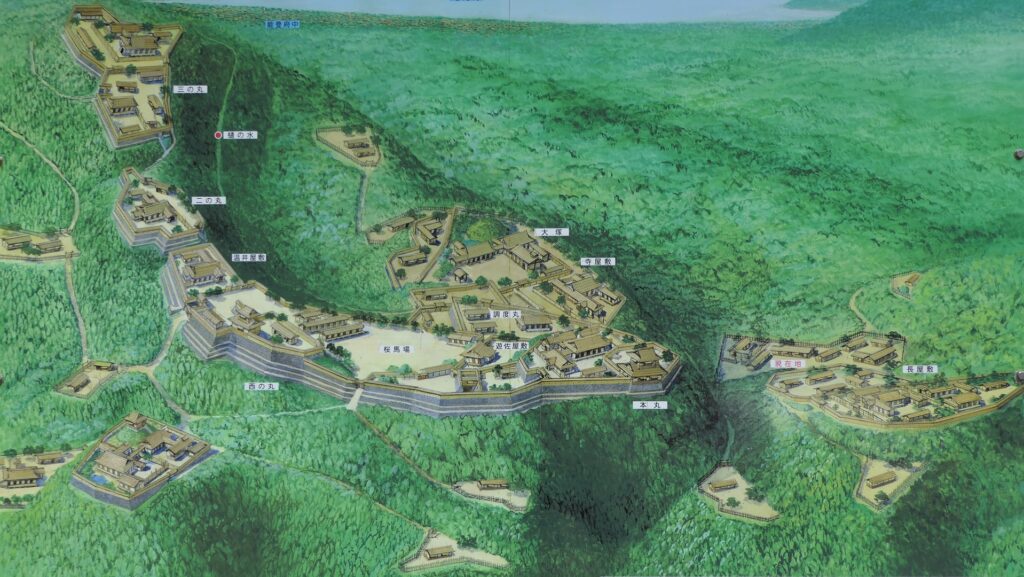
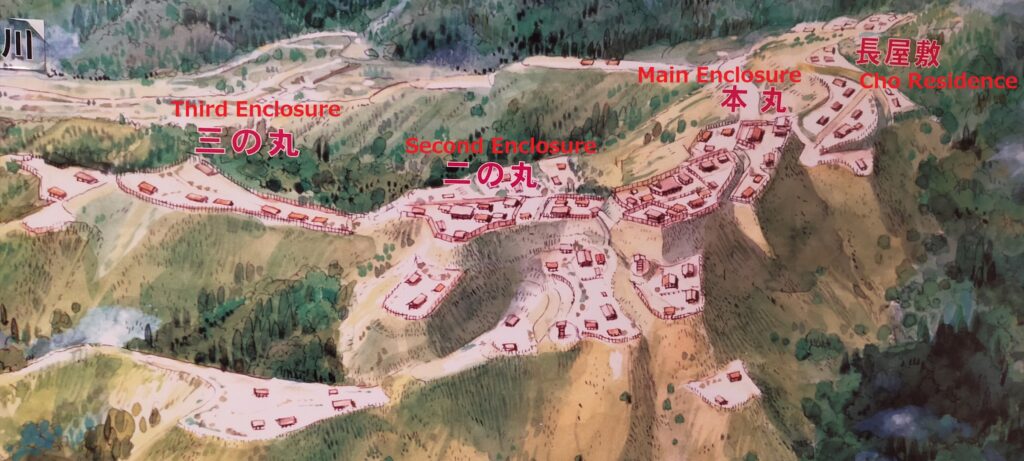
Uesugi and Oda Clans battled over Castle
Around Noto Province in the late 16th Century, the two great warlords were dominating, Nobunaga Oda in the west of the Province and Kenshin Uesugi in the east. Kenshin decided to attack Nanao Castle in 1576 despite the lord of the castle being a child who was supported by the senior vassals. Kenshin was said to be the strongest warlord, and he only needed to siege the castle without the need for an aggressive attack. The siege lasted for about two months, and the young lord was unfortunately killed by the epidemic. The senior vassals had different opinions. On one side, the Cho Clan wanted to ask Nobunaga for help, however, the Yusa Clan did not feel the same way. Nobunaga finally sent his reinforcement to the castle, and the Yusa Clan managed to defeat the Cho Clan and supported Kenshin. Eventually, the castle finally belonged to Kenshin.


Despite the victory, Kenshin died just six months later, and as a result, Nanao Castle was eventually occupied by Nobunaga. Nobunaga gave Noto Province and Nanao Castle to his retainer, Toshiie Maeda in 1581. Toshiie built the Three-layer Main Tower on the Main Enclosure and large scale stone walls which was the front side of the castle. On the other hand, Toshiie also built his new home base called Ko-Maruyama Castle near Nanao Port for the convenience of the government and ease of transportation. Nevertheless, the reason why he continued to improve Nanao Castle was thought to be for the new Main Tower. Furthermore, the stone walls showed his authority and it symbolized the lord of the castle has changed in that area. The castle was eventually abandoned in 1589.
